- News
- Reviews
- Bikes
- Components
- Bar tape & grips
- Bottom brackets
- Brake & gear cables
- Brake & STI levers
- Brake pads & spares
- Brakes
- Cassettes & freewheels
- Chains
- Chainsets & chainrings
- Derailleurs - front
- Derailleurs - rear
- Forks
- Gear levers & shifters
- Groupsets
- Handlebars & extensions
- Headsets
- Hubs
- Inner tubes
- Pedals
- Quick releases & skewers
- Saddles
- Seatposts
- Stems
- Wheels
- Tyres
- Tubeless valves
- Accessories
- Accessories - misc
- Computer mounts
- Bags
- Bar ends
- Bike bags & cases
- Bottle cages
- Bottles
- Cameras
- Car racks
- Child seats
- Computers
- Glasses
- GPS units
- Helmets
- Lights - front
- Lights - rear
- Lights - sets
- Locks
- Mirrors
- Mudguards
- Racks
- Pumps & CO2 inflators
- Puncture kits
- Reflectives
- Smart watches
- Stands and racks
- Trailers
- Clothing
- Health, fitness and nutrition
- Tools and workshop
- Miscellaneous
- Buyers Guides
- Features
- Forum
- Recommends
- Podcast
TECH NEWS
Wahoo launches 14% quieter Kickr direct-drive trainer
Wahoo has today launched an updated version of its popular Kickr direct trainer, as used by Team Sky, which it claims is 14% quieter than the old model.
The company claims the reduction in noise makes it the quietest direct drive trainer on the market, a market which is growing every year with more brands releasing direct-driver trainers which mount the bicycle frame directly to the trainer with the rear wheel removed.
Along with the reduced noise levels, Wahoo has also developed new algorithms to make it more responsive and realistic. The Kickr has a 2000W power output ability and can simulate inclines up to 20%.
The Wahoo Kickr is compact trainer and can be folded for storage, but it’s not light, so it has developed a new handle that is more ergonomic to aid movement. There are now LED lights to show when an ANT+ and Bluetooth connection has been made with a compatible phone or computer.
“The KICKR not only ushered in a new era of indoor training, it has continued to set the gold standard for performance,” said Chip Hawkins, CEO of Wahoo. “Now, the new KICKR raises the bar even higher, ensuring the KICKR will continue to be the yardstick by which all measured.”
Carsten Jeppesen, Head of Technical Operations at Team Sky said: “Wahoo’s KICKR is a best-in-class product that gives us exactly what we need for both indoor training programs and race-day warm-up and cool-down.”
We'll be having a closer look at the new Kickr soon.
- Buyer's guide to smart trainers + seven of the best
The new Kickr costs £949.99 and is available at http://uk.wahoofitness.com/devices/wahoo-kickr-powertrainer
David worked on the road.cc tech team from 2012-2020. Previously he was editor of Bikemagic.com and before that staff writer at RCUK. He's a seasoned cyclist of all disciplines, from road to mountain biking, touring to cyclo-cross, he only wishes he had time to ride them all. He's mildly competitive, though he'll never admit it, and is a frequent road racer but is too lazy to do really well. He currently resides in the Cotswolds, and you can now find him over on his own YouTube channel David Arthur - Just Ride Bikes.
Latest Comments
- Simon E 2 sec ago
Just squirt some thick grease all over his side windows and door panels. If you're feeling really uncharitable you could throw some sand at the...
- David9694 39 min 51 sec ago
check under 'W'for "What cars do to people"
- quiff 1 hour 9 min ago
Less academic, but memorably encapsulated recently by Saoirse Ronan
- quiff 1 hour 20 min ago
Fascinating - I have always thought Hersheys has a whiff of vomit about it!
- Global Nomad 1 hour 21 min ago
good to see you're testing the farsports wheels - hope to see road.cc continue to expand the range of brands it considers. These or the shallower...
- chrisonabike 1 hour 24 min ago
Duly triggered! (At least "it's comedy!" though)....
- quiff 1 hour 25 min ago
Agreed, though those in thrall to the car lease would probably think the same of my coffee expenditure...
- chrisotherwise 1 hour 55 min ago
Sadly very normal. And the sand contains loads of evil little shards of flint.
- quiff 5 hours 16 min ago
"The algorithm" served me an older JV video last week which I now can't get out of my head....



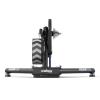
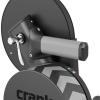

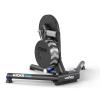
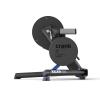
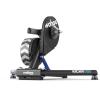



Add new comment
12 comments
I have a Kickr, I have never been bothered by the noise it generates, my wife can speak to me without raising her voice( humans talking 60-70dB). I can hear the radio over the Kickr. The most noise comes from a fan to cool down. If you're not using a fan, you aren't trying very hard to train for improvements. Thats is the whole idea with an indoor 'trainer'
The latest versions are an improvement, but you're not going to get a virtaully silent one so 60dB is bloody good. What would you rather hear, the whirr of a trainer, or the voice of your wife?
I use a Kickr with Zwift and I was surprised how loud it was when you are motoring along.
But once I got my head around how Zwift controls the resistance, moving the chain up towards the top end of the cassette obviously means the mechanism is rotating at a slower rate and the noise level drops considerably.
Sad to say it took me a while to work that out.
My crying and screaming usually drowns out the din of the turbo.
Stick in the earphones, put on 80s film montage music and turn up the volume!
Well, to be fair, you posted three figures with no commentary. We all know that sound differs but the implication to the reader might be that these breach the guide significantly and are bad. My neighbour got his magnetic yesterday. It's loud. But with his garage door shut it shouldn't be an issue to anyone.
Very happy with my Kickr, its not a quiet as I was expecting but its not really that bad and besides...in the man cave no one can hear you scream.
I'd be expecting a firmware upgrade with these new algorithms, wahoo seem pretty good like that.
So are any of these improvements retrofittable to older generation KICKRs? The "new algorithms" for example sounds like it should only require new firmware…
Bet it runs over 60DB still. Making it a racket. Interested in Elite's effort though, the Drivo. See if it lives up to claims of being quiet (chain noise only).
Edit: just saw an email about the new KickR claiming to be 61dB. Which is of course going to be the low end for marketing purposes.
Acceptable noise levels in residential areas during the day:
Zone G (residential and all other areas): 45 dB(A).
At night:
Zone G (residential and all other areas): 35 dB(A).
Not sure you can make a direct comparison there - I would think that the acceptible noise levels in residential areas are ambient noise levels, whereas the noise level from the trainer will presumably be the noise level measured at a fixed distance (say 1m) from the trainer. When you move further from the trainer, the noise level in dB(A) will be lower. Unless you specify the measuring distance and position, and the environment (anechoic chamber or room with hard walls, what flooring material, etc) the figure is completely meaningless.
Actually, I suspect that the magnitude of vibration transmitted to the floor is at least as significant to how noisy these trainers actually are in use, as the floor will vibrate producing noise that is probably not measured in the standardised test, hence using a foam mat can improve things.
I'm not sure why these direct drive trainers aren't quieter. Perhaps it's a problem with balance producing vibration - I don't know how perfectly cassettes are balanced so it may not be all the trainer manufacturer's fault.
It's not meaningless Dave. It's a guide.
Everyone except perhaps the neighbour's goldfish knows that the further away you are from the source of a noise, the material between you and the source and other factors, will affect the volume. Reduce it, even amplify it.
My God man.
Kickrs issue was mainly with the belt IIRC - the Drivo uses belts as well, but seems quieter and the NEO has a different tone (which to my ears is much more pleasant than the whine from the original Kickr). Latest generation of them seem to have more noise from the drive-chain than the trainer at modest efforts, not really heard any of them at high speeds for real (some recordings from Ray Maker, but it's quite difficult to tell without being there). No reason they can't go quieter though..
Unfortunately, the figure of 61 decibels (dB) quoted on their website is not very helpful. It may be either a sound power level (the total acoustic energy emitted by a device), or a sound pressure level (the amount of sound at a listening position). Both are expressed as decibel ratios.
The sound power level of a device can be likened to the kilowatt rating of an electric heater – essentially how much energy it output as heat. The sound pressure level is analogous to the resulting air temperature at a particular position. If you are close to the heater, at a distance of say 1m, the air temperature may be high. If you are 10m away, then the air temperature will be less. The size and characteristics of the room that you have the electric heater in is also a factor; at 10m from the heater, the air temperature will be very different in a uber-insulated eco house versus a 12th century cathedral, or from what it would be outdoors. So it is with noise, the sound pressure level that your ears detect will be determined by the characteristics of the room (small room generally results in greater sound pressures) and the distance from the the noise source.
Another thing that I picked up on is that the Kickr website simply says ‘decibels’. The two noise guidelines that you made reference to (link is dead but it looks like AUS legislaion?) are set out in terms of dB(A), which means A-weighted decibels. A-weighting is a process where sound pressure levels are adjusted by a frequency filter network which mimics the frequency response of a typical human ear – you can think of this as putting the noise through an equaliser which reduces the prominence of very low/high frequencies that the ear is not good at detecting. The A-weighted value of a sound can be numerically quite different from its unweighted value.
In summary, the information provided in the advert isn’t actually sufficient to work out what the noise emissions of the new Kickr are...